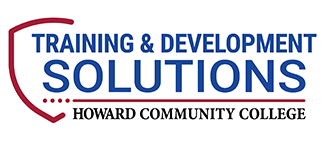
Leadership Development
By: Minah Woo, Associate Vice President of Continuing Education and Workforce Development
Change management has been a longstanding priority for many leaders because the only constant is change in most business cultures.
People change.
Teams change.
Leaders change.
Budgets change.
Product lines and services change.
Strategies change.
Priorities change.
The list could go on and on. As a leader, you have two choices: (1) wait for change to take place and then respond to it, or (2) keep a constant eye on what lies ahead, and plan and prepare, thoughtfully and proactively. I am an advocate for choice number two. And there are reasons why you should be, too.
Within the training and professional development industry, a new light has been cast on the term VUCA in the midst of the COVID-19 pandemic. It’s an acronym the describes situations of volatility, uncertainty, complexity, and ambiguity, and it captures what is being felt and experienced within many business cultures, right now. The changes that took place over the past year and a half as a result of COVID-19 were significant and necessary. The change that will continue to take place as we begin to think past COVID-19 and how we will function as a forever-changed society, will also be significant and necessary. We can resist them, or we can embrace them. As leaders, we have an opportunity to draw the line in the sand and create stability and promise for our teams at a time when so much uncertainty still exists. How? Five strategies are as follows:
- Establish a plan for what’s to come. Consider where you are and what will change in the coming weeks and months (even years). Map out the steps you need to take as a leader to plan for and optimize change for your business, team, and customers. Now is the time.
- Promote change. Deliver the message that change is not a bad thing. In fact, it can be quite the opposite. Change can be positive and often leads to opportunity. Create a culture where change is expected and welcomed.
- Engage your team. Educate your employees about where you are versus where you need to be, as a company. Ask for their input and ideas. These conversations will poise your team to accept, embrace, adapt, buy in, and support the steps you need to take as you make change – even if they are the hard ones to take.
- Communicate. Be open, honest, and transparent. Create opportunities for people to ask questions and provide answers or commit to finding answers and getting back to them as soon as you can.
- Think long-term. The continued pivot through and out of COVID-19 is front and center on your mind and everyone else’s mind too. But remember, change within the workplace will continue after COVID-19 is a distant memory. What lies ahead for your business and team, that has nothing to do with the pandemic? Leverage your lessons learned. Think about what comes next and begin a conversation about it now rather than delaying the process until the time change is actually happening.
Change is an ongoing conversation in the Continuing Education and Workforce Development Division at Howard Community College. We have made it a priority to think beyond the present and envision what the next version of ourselves could look like. We think about the role of technology and how might enhance existing processes and workflows, as it continues to evolve. We think about what our team’s focus will be next year, five years from now, even 10 years from now, and what we can do today, in line with those visions. We practice what we preach, applying concepts from our own Challenges of a Changing Organization course. I encourage all leaders to do the same.
